
What follows is a picture of the groundwater challenges at home and abroad. I must concede that I became depressed while putting this together, but then remembered far more brilliant people are working on ways to manage our way out of this crisis. We just need more of these folks to make it a priority NOW, as UC Irvine/Jet Propulsion Laboratory water scientist Jay Famiglietti would tell you.
READING ASSIGNMENT: An Inconvenient Thirst: Water scientist Jay Famiglietti pleas for smart use of our most precious resource before it's too late. Will we listen?
LEARN MORE: JayFamiglietti.com
]
1) ORANGE COUNTY
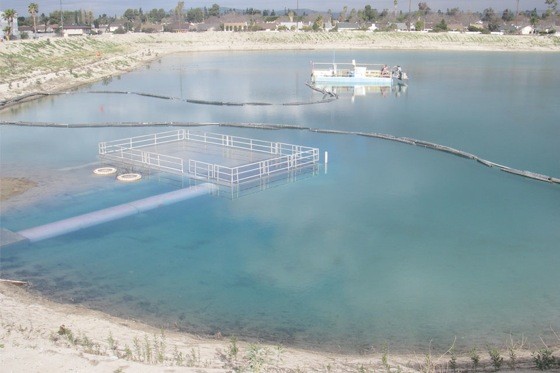
Fifty percent of the water consumed in Orange County is pumped in. Despite Famiglietti praising water management here, those imports are in jeopardy. Drought, over-pumping and climate change have nearly tapped out the Central Valley, and the flow from the Colorado River via the Los Angeles Aqueduct may quickly slow. A magnitude 6.7 or greater earthquake could destroy the State Water Project, the 400-mile system that brings Sacramento River water south to arid SoCal.
2) CALIFORNIA
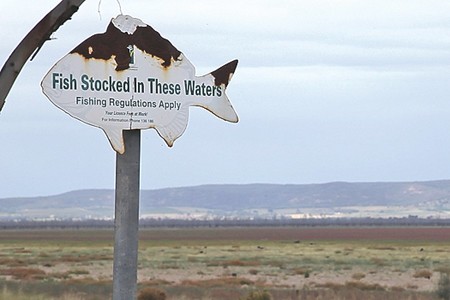
See above and now consider this: Normally in California, one-third of our annual water supply came from groundwater. With this historical drought, it's now up to 70 percent. Since 1998, the state has lost enough freshwater to fill Lake Mead 1 1/2 times. If we pump from the state's aquifers at the current rate, it will be 60-100 years before they are bone dry. Some individuals' Central Valley spigots already don't have water coming out of them.
3) COLORADO RIVER BASIN
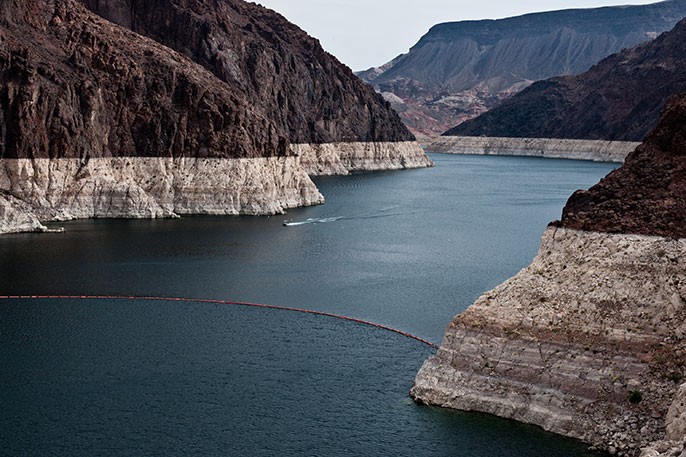
Re-read Nos. 1 & 2 and consider this: The basin that supplies water to 40 million people and 4 million acres of farmland in California, Nevada, Utah, Arizona, New Mexico, Wyoming and Colorado lost more than 13 trillion gallons of water in less than a decade. Keep in mind it took millions of years to fill those aquifers. Add a declining snow pack and population growth and you can see why the West's long-term water security is threatened.
[
4) SOUTH DAKOTA, NEBRASKA, KANSAS, OKLAHOMA, TEXAS

Like in California's Central Valley, farmers in the Ogallala Aquifer region take pride in setting the nation's table. Also known as the High Plains Aquifer, it stretches from South Dakota all the way down to Texas and supplies 30 percent of the country's irrigated water. But in these dry times, farmers and cities are sucking up a combined 15.6 cubic kilometers of water annually. Meanwhile, arsenic, chloroform, pesticides and other compounds enter the aquifer through recharging.
5) ELSEWHERE IN THE U.S.

Satellite images have shown areas around Houston, Alabama and the mid-Atlantic states have all suffered steady groundwater depletion. Those regions could run dry within a few decades without better management. Yes, over-pumping can even imperil wet states like Alabama. Famiglietti was surprised to hear groundwater depletion concerns raised at a conference in Minnesota. Meanwhile, water storage is increasing in the Missouri River Basin, making the region more prone to dangerous flooding.
6) THE MIDDLE EAST
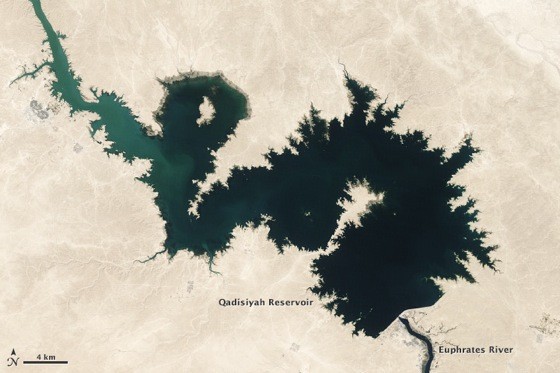
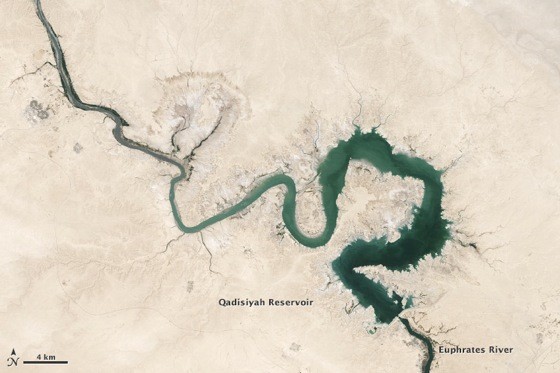
The Tigris-Euphrates river basin–the region that stretches from eastern Turkey to western Iran and gave birth to agriculture itself–lost 144 cubic kilometers of freshwater between 2003 and 2009. That's equivalent in volume to the Dead Sea. Water scarcity has been a component driving Syria's civil war. The only place in the world where there is a faster rate of water depletion is …
[
7) INDIA
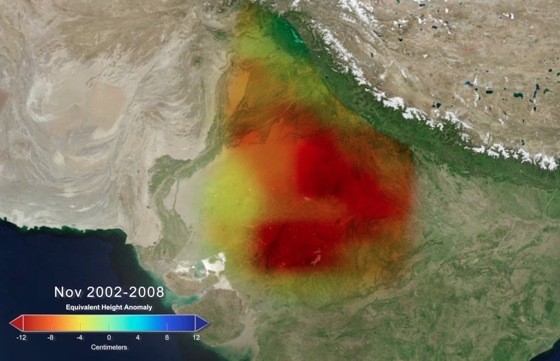
The Northwestern India aquifer that straddles India and Pakistan has been depleted at a rate of 17.7 cubic kilometers a year since 2013. What's interesting about that is GRACE (NASA/JPL's Gravity Recovery and Climate Experiment) research had identified the aquifer as an area of concern as far back as 2009. India's growing middle classes desire more water and food and products that rely on water. But it's not like they'd clash with Pakistanis over water, right?
8) FAR EAST

Some areas in Bangkok, Thailand, have sunk more than three feet since the mid-1970s. The land is also sinking in coastal parts of India and China that have also seen rapid population growth. Jakarta, Indonesia, is the world's fastest sinking mega city, with some areas of it having subsided more than 12 feet in the past 35 years. Sucking up fresh water until the ground below it sinks at the same time that sea levels are rising can't be a recipe for disaster, right?
9) EARTH
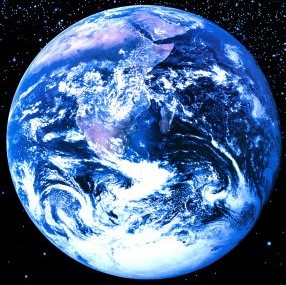
Less than 1 percent of the world's water is drinkable, agriculture relies on 70 to 80 percent of that, and the global demand for it is only going to grow. The U.N. projects that the world's 7 billion population will rise to 9 billion by 2050. The World Health Organization says more than 780 million people–or two-and-a-half times the U.S. population–lack access to clean water, and more than 3 million people die annually due to water shortages. The Pacific Institute lists 225 conflicts over water through human history, with nearly half of those coming in the past two decades.
-Text based on interviews with Jay Famiglietti, his team's research papers and articles on that research from the past seven years or so.
See also:
An Inconvenient Thirst: Jay Famiglietti Reader
An Inconvenient Thirst: Famiglietti's Itinerary
An Inconvenient Thirst: 6 Videos on UCI/JPL's Alarming Groundwater Research
Email: mc****@oc******.com. Twitter: @MatthewTCoker. Follow OC Weekly on Twitter @ocweekly or on Facebook!

OC Weekly Editor-in-Chief Matt Coker has been engaging, enraging and entertaining readers of newspapers, magazines and websites for decades. He spent the first 13 years of his career in journalism at daily newspapers before “graduating” to OC Weekly in 1995 as the alternative newsweekly’s first calendar editor.

